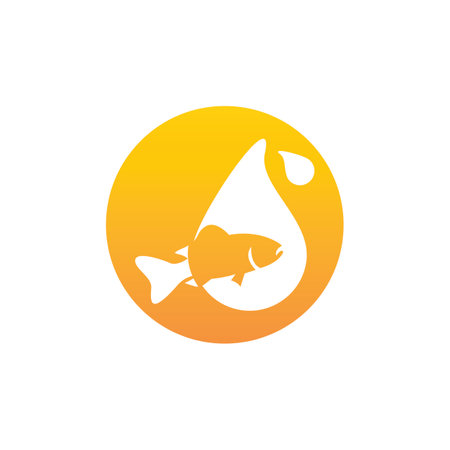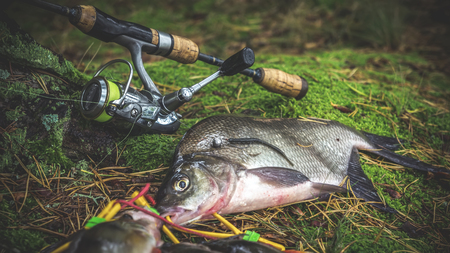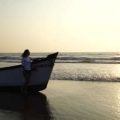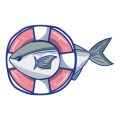Introduction to Seasonal Restrictions and Closures
For anglers across the United States, nothing quite matches the anticipation of casting a line into their favorite waters. Yet, if you’ve ever arrived at a fishing spot only to find it temporarily closed, you’ve experienced firsthand the impact of seasonal restrictions and closures. These regulations are far more than just bureaucratic red tape—they’re essential tools for protecting our nation’s fisheries. Seasonal closures are carefully timed to coincide with critical periods in fish life cycles, such as spawning or migration. By limiting access during these sensitive times, wildlife agencies help ensure that fish populations can reproduce successfully and maintain healthy numbers for future generations. Understanding why these rules exist not only deepens our respect for the natural world but also helps us become better stewards of our local waters. In this article, we’ll explore the reasons behind seasonal fishing bans, how they support conservation efforts, and why following them is vital for both fish and fishermen alike.
Typical Seasons and Closure Periods
Across the United States, seasonal fishing restrictions are as diverse as the fish themselves. Different regions set unique closure periods to protect popular species during their most vulnerable times, such as spawning or when water temperatures put extra stress on fish populations. Understanding these common closure periods helps anglers not only comply with local laws but also support sustainable fisheries for generations to come.
Common Closure Periods by Species
| Species | Region | Typical Closure Period | Reason for Closure |
|---|---|---|---|
| Bass (Largemouth & Smallmouth) | Midwest, Northeast | April – June | Protect spawning beds during spring spawn |
| Trout | Rocky Mountains, Northeast, California | October – April (varies by state) | Winter closures allow population recovery and habitat protection |
| Salmon | Pacific Northwest, Alaska | Late summer – fall (varies by run) | Allow for upstream migration and spawning success |
| Walleye | Great Lakes, Upper Midwest | March – May | Spring spawning protection |
| Striped Bass | East Coast (Chesapeake Bay, Hudson River) | April – June (varies by state) | Nesting season protection for spawning stock |
| Red Drum (Redfish) | Southeast, Gulf Coast | September – November (select areas) | Preserve breeding-age fish during peak spawn |
A Closer Look at Spring Spawning Bans
The most widespread closures happen in spring, when many fish are busy making the next generation. For example, bass fishing might be off-limits in certain lakes or rivers from late April through early June, giving those big mama bass a chance to lay eggs undisturbed. Walleye and striped bass follow similar patterns along major waterways like the Mississippi or Chesapeake Bay.
Winter Trout Restrictions: Giving Fish a Break
If you’re a trout fan out West or up North, winter can mean some of your favorite streams are off-limits. These closures help trout populations recover after a busy fishing season and reduce pressure when cold weather stresses fish the most. Always check local regulations—some states even designate “catch-and-release only” periods instead of full closures during these months.
By staying aware of these typical closure periods, anglers can plan trips around open seasons and do their part to keep America’s fisheries thriving year after year.

3. How to Find Local Fishing Ban Information
When it comes to respecting seasonal restrictions and closures, knowing exactly where to fish—and when—is crucial for every angler. The most reliable way to stay informed is by consulting official state fish and wildlife websites. Most states maintain updated pages detailing current fishing bans, emergency closures, and specific seasonal restrictions. These sites often provide downloadable guides, interactive maps, and even real-time updates on temporary changes due to weather or conservation needs.
For those who prefer on-the-go access, many state agencies now offer dedicated mobile apps. These apps can send push notifications about new restrictions, help you locate nearby open waters, and sometimes include handy tools like digital fishing licenses or species identification guides. Be sure to enable location permissions so you get alerts specific to your favorite fishing spots.
Local tackle shops, bait stores, and community bulletin boards are also great sources of up-to-date information. Seasoned anglers and shop owners often have the latest scoop on local closures or changes that may not be immediately posted online. It’s worth striking up a conversation with the locals—they’re usually happy to share their knowledge (and maybe a few secret spots too).
Lastly, don’t overlook social media groups and forums dedicated to fishing in your state or county. While these platforms aren’t official sources, they can be valuable for hearing about last-minute changes or comparing notes with fellow enthusiasts. Just remember to always cross-reference any unofficial tips with state resources before heading out.
By using a combination of official websites, mobile apps, local contacts, and community networks, you’ll ensure you’re fishing responsibly—and legally—no matter the season.
4. Penalties for Violating Seasonal Bans
If you’re tempted to cast your line during a closed season or in a restricted area, it’s important to know that breaking these rules comes with real consequences. Fish and wildlife agencies across the U.S. take seasonal bans seriously—not just for legal reasons, but to protect fish populations and preserve our favorite fishing spots for years to come.
Common Penalties You Might Face
| Type of Violation | Possible Consequences |
|---|---|
| Fishing During Closed Seasons | Fines (often $100–$1,000), possible court appearances |
| Using Banned Gear or Techniques | Additional fines, gear confiscation |
| Repeat Offenses | License suspension or revocation, increased fines |
| Fishing in Protected Areas | Heavier fines, possible criminal charges depending on state law |
Why Are These Penalties So Strict?
The penalties aren’t just about following the rules—they’re about protecting the natural balance. When anglers ignore seasonal restrictions, it can disrupt spawning cycles and put extra pressure on already vulnerable fish populations. This can lead to fewer fish in the future and even impact the health of entire aquatic ecosystems.
Environmental Ripple Effects
Every angler knows that healthy waters mean better fishing. If we don’t respect closures, we risk damaging habitats, reducing biodiversity, and missing out on those memorable days at the lake or river. It’s not just about avoiding a ticket—it’s about keeping our outdoor traditions alive for generations to come.
5. Responsible Fishing All Year
Fishing isn’t just about the thrill of the catch—it’s about stewardship and respect for our natural resources. No matter the season or local restrictions, American anglers have a unique opportunity to enjoy the outdoors while making a positive impact. Practicing responsible fishing helps ensure these treasured waters stay healthy and abundant for generations to come.
Practice Catch-and-Release Ethics
When regulations require—or even when you simply want to help preserve fish populations—catch-and-release is an essential skill. Handle fish gently, use barbless hooks, wet your hands before touching them, and return them to the water quickly. These small actions can make a big difference in their survival rates.
Respect Seasonal Closures
Always double-check local rules before heading out. Many states post up-to-date information on their Fish and Wildlife websites, including maps showing closed areas and times. Respecting these closures, even when it’s tempting to bend the rules, protects spawning grounds and helps fisheries recover.
Support Local Conservation Efforts
Consider getting involved with local conservation groups or supporting habitat restoration projects. Volunteer clean-up days, citizen science initiatives, and donations all help protect the waterways we love. Purchasing a fishing license also directly funds many of these efforts—so keep yours current!
Be a Good Steward Outdoors
Leave no trace: pack out all trash, avoid disturbing wildlife, and share your knowledge with new anglers. By setting a good example and advocating for responsible fishing practices, you help strengthen America’s angling community and ensure everyone can enjoy our lakes, rivers, and coasts year-round.


